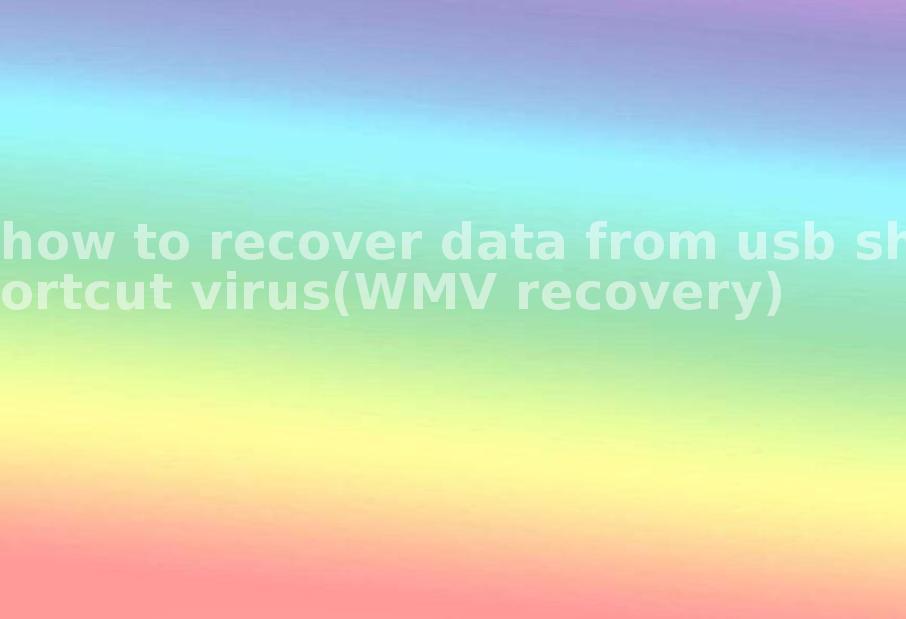how to recover data from usb shortcut virus(WMV recovery)
2023-10-21 12:50 395
Part I. Overview of the context in which the document was recovered:
In today's digital age, USB drives have become one of the most common and convenient ways to store and transfer data. However, they are also prone to various threats such as viruses, including the USB shortcut virus.
The USB shortcut virus is a type of malware that hides the original files on the USB drive and creates shortcut links instead. When users double-click on these shortcuts, they unknowingly execute the virus, which can potentially infect other computers and compromise data security.
Recovering data from a USB shortcut virus can be challenging but not impossible. Here are a few examples of the context in which the document was recovered:
1. An office scenario: Suppose a USB drive was used by an employee to transfer important documents between computers in an office. However, the USB drive gets infected with the shortcut virus, rendering all the important files inaccessible.
2. Personal storage: A user may have saved personal files such as photos, videos, and important documents on a USB drive. Due to a shortcut virus infection, all the files are hidden, and only shortcuts are visible, making it impossible to access the original data.
Part II. Causes of generation:
There are several reasons why a USB drive may get infected with the shortcut virus. Here are some common causes:
1. Infected computers: Plugging in an infected USB drive into a computer can transfer the virus to the drive, making it vulnerable to the shortcut virus.

2. Downloading files or programs from untrustworthy sources: Files downloaded from suspicious websites or sources can contain malware, including the shortcut virus.
3. Lack of antivirus software: If a computer does not have proper antivirus protection, it is more susceptible to viruses and malware, including the shortcut virus.
Part III. Solution and steps to recover data:
To recover data from a USB shortcut virus, follow these steps:
1. Scan the USB drive: Use a reliable and up-to-date antivirus software to scan the USB drive for any malware or viruses, including the shortcut virus. Remove any detected threats.
2. Unhide the original files: Open the USB drive on a computer and enable the display of hidden files. In Windows, go to "Folder Options" > "View" > "Show hidden files, folders, and drives." This will unhide the original files hidden by the shortcut virus.
3. Restore the files: Once the original files are visible, copy them to a new location on your computer's hard drive. Make sure to scan them with antivirus software before opening them to ensure they are not infected.
4. Format the USB drive: After safely restoring the files, format the USB drive to remove any remaining traces of the shortcut virus. This will help prevent future infections.

Part IV. Types of other files that can be recovered:
In addition to recovering documents, there are other types of files that can be recovered from a USB shortcut virus:
1. Photos and videos: Personal photos and videos that may have been hidden by the shortcut virus can be recovered using the steps mentioned earlier.
2. Music files: If your USB drive contains music files that have been affected by the shortcut virus, you can follow the same steps to recover and restore them.
3. Executable files: In some cases, the shortcut virus may target executable files, making them inaccessible. By scanning and unhiding the files, you can recover and restore these executable files.
Part V. Related FAQs:
1. Can a USB shortcut virus infect multiple computers? Yes, if an infected USB drive is connected to multiple computers, the virus can spread, potentially infecting all the connected devices.
2. Is it possible to recover all the files infected by a shortcut virus? While it is possible to recover most of the files infected by a shortcut virus, it is not guaranteed. Some files may be permanently damaged or corrupted by the virus.
3. How can I protect my USB drives from shortcut viruses? To protect your USB drives, make sure to have an updated antivirus software installed on your computer. Be cautious when plugging in USB drives from unknown sources and avoid downloading files or programs from untrustworthy websites. Regularly scan your USB drives for viruses and malware.









